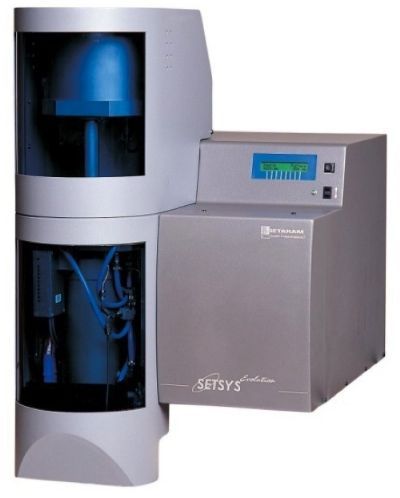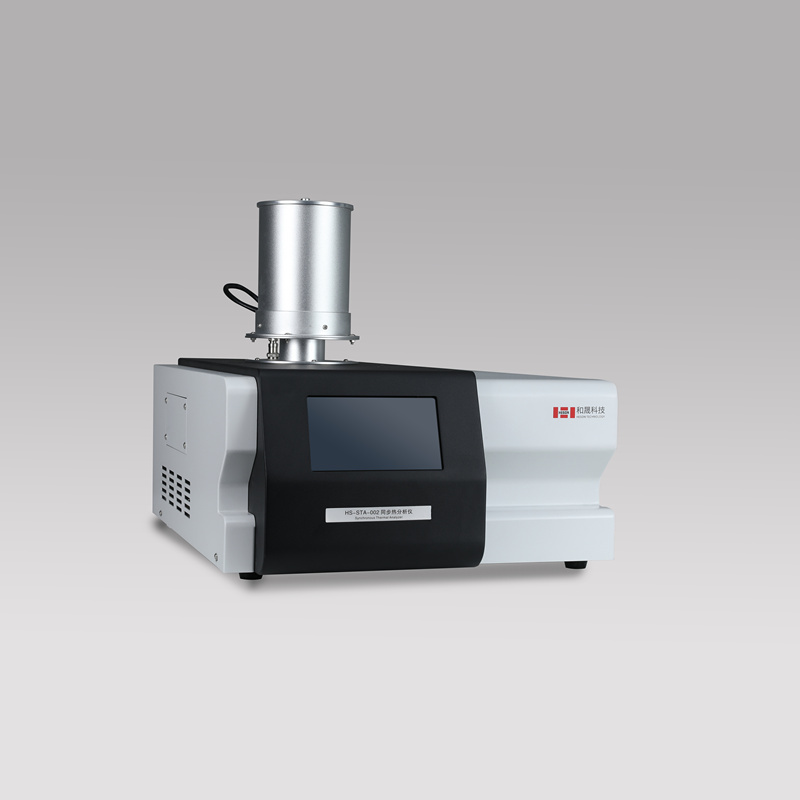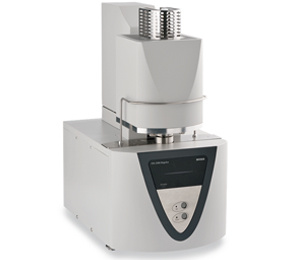方案详情文
智能文字提取功能测试中
THERMOPHYSICAL PROPERTIES OF TOBACCO AND CIGARETTES Bruce E. Waymack and Joseph L. Banyasz INTRODUCTION The values of the thermophysical properties of tobacco and other cigarettecomponents are important input parameters for cigarette combustion modelsandtobacco process design and characterization. Knowledge of these values is alsoessential to the development of cigarette prototypes with modified burningcharacteristics. Heat capacity, thermal diffusivity and thermal conductivity are keyparameters. An understanding of these thermophysical properties for substrates incontact with a burning cigarette is essential for understanding cigarette related firescenarios. Work in these areas has been reported by tobacco companies as well asgovernment agencies8-101. Data have been reported for the heat capacities[5,11-14]and thermal diffusivities[5,14-16] of tobacco but relatively little information existswith regard to thermal conductivity. In this paper we present the thermal conductivity and thermal effusivity valuesdetermined for an extensive set of tobaccos as well as cigarette paper and filter tow.The tobacco types include bright, burley, reconstituted sheet materials and blends.The results are compared to both published and unpublished previously determinedsmaller data sets. The available heat capacity data are reviewed. The resultssuggest that most biomass materials behave similarly with regard to thermophysicalproperties. EXPERIMENTAL Measurements of thermal conductivity and thermal effusivity were performedon tobacco materials and cigarette components using a Mathis TC-01 thermalconductivity instrument (Mathis Instruments, Fredericton, NB, Canada). Theinstrument was calibrated with the standards provided by Mathis; covering therange of 0.05 -1.1 W/mK for conductivity and 70-1400Ws/m’K for effusivity.Measurement times were typically on the order of 2 seconds. Some determinationswere made with a standard 5 x 50 mm sensor, but most determinations were madewith a 5 x 25 mm sensor designed for powder measurements. All measurementswere made at 25+2°C. Tobacco shreds, similar in size to those in a cigarette, were equilibrated atdifferent relative humidity (RH) conditions to produce different moisture contentsand compressed to different volumes in the sensor holder to produce tobacco bedswith different bulk densities. Bright and burley tobaccos, as well as a cigaretteblend tobacco were examined. Thin materials, such as cigarette paper and tobaccosheet, were stacked in 5 - 15 layers and compressed against the sensor to obtainenough thickness for accurate measurements. Tobacco sheet is a paper-like sheetmaterial made from tobacco dust and by-products. Thermal penetration of the ( Philip Morris USA Research Center, 4201 Commerce Rd. Richmond, VA 23234 U SA ) layered materials was checked for by using different sides (HPE and foam) of aMathis blotter weight to compress the layers against the sensor. Cigarette filtermaterial was measured without paper over-wrap and under slight compressionagainst the sensor. Heat capacity and thermal diffusivity values were calculatedfrom conductivity, effusivity and density. Densities of paper and sheet materialswere determined from weighing a known area and measuring thicknesses with amicrometer. Moisture content of tobaccos was determined from the weight lostupon heating 1 g samples to 100 C for 30 minutes in air. Thermal properties of some supporting materials that have been used for testingthe ignition propensity of cigarettes were also measured with the Mathis TC-01.These materials were several cotton (duck’and upholstery) fabrics, polyurethanefoam, polyethylene film, and Whatman #2 filter paper. When the material was lessthan about 0.5 mm thick, multiple layers were used. Several other cellulosicbiomass materials were examined as well and include pine sawdust, pine board,cotton, Avicel 102 micro-crystalline cellulose, and Whatman CC41 cellulosepowder. Some previously unreported results on tobacco thermophysical properties arereported here as a comparison to the values generated with the Mathis TC-01instrument. Heat capacity values are compared from DSC measurementsas wellas from measurements reported in the literature using a cooling calorimeter.Thermal diffusivity and thermal conductivity measurements are reported from in-house constructed techniques. Thermal diffusivity was measured by monitoring thecenter temperature of a tobacco containing cylinder immersed in an ice bath orsurrounded by an ice water jacket. Thermal conductivity was determined bymeasuring the temperature profile across tobacco packed in a cylindrical annulusaround a cartridge heater at known power. Also, some thermal conductivity dataare shown from an unguarded flat plate apparatus (International ThermalInstruments, Del Mar, CA, USA) for fabrics and paper and from an in-houseconstructed apparatus designed to measure thin materials under high pressure, so asto achieve absolute material density 14. RESULTS AND DISCUSSION Tobacco Shreds and Bulk Density Figure 1 shows the thermal conductivity of tobacco shreds as a function ofbulk density. Most of the data points are blend tobacco, but there are a few pointsfor bright and burley and ground burley (particle size of about 0.1 mm) and onepoint for tobacco sheet material. These results indicate that thermal conductivity isa linear function of bulk, or apparent density, regardless of tobacco type. Thesetobaccos were all equilibrated to approximately the same moisture content(typically 11 -12%, dry weight basis) by conditioning at 55 % RH. For a typicalcigarette rod density of about 0.25 g/cc, the thermal conductivity of the tobacco bedwould be about 0.08 W/mK. Figure 1. Thermal Conductivity of Tobacco as a Function of BulkDensity at Constant Moisture Content at 25°C Figure 2 shows the same data as Figure 1, but also includes thermalconductivities calculated from previous thermal diffusivity measurements in ourlaboratory from a blend tobacco as a function of packing density. Thermaldiffusivity is a linear function of reciprocal of the bulk density, which gives aresulting thermal conductivity that is linear with density from the relationship:diffusivity= density/(heat capacity x conductivity). It is interesting that eventhough the line for the diffusivity derived data lies slightly below the measuredconductivity line, the slopes are exactly parallel. This is shown by the equationslisted in Figure 2, where krc represents the regression through all the data from theMathis TC-01 instrument and kairf represents the regression through the diffusivitydata. Although the diffusivity data were measured at a lower temperature, thisshows that the relationship between conductivity and density holds true for all thetobacco samples studied here. This agrees well with data reported by Muramatsu,whose reported thermal conductivity values for bright and burley tobacco shredsaveraged 0.08+0.005 W/mK (at20C, 11-13 % moisture) . Muramatsu alsofound that conductivity was directly proportional to one minus the void volume,which agrees with our linear relationship between conductivity and bulk density. Figure 2. Thermal Conductivity Compared from Direct Measurement andfrom Thermal Diffusivity Measurements as a Function of Bulk Density Tobacco and Moisture Content Figures 3, 4, and 5 show thermal conductivity, thermal effusivity, and heatcapacity as a function of moisture content for the blend tobacco, respectively. Theheat capacity was calculated from measured conductivity and effusivity data and theknown bulk density from the expression: effusivity = (density x conductivity xspecific heat)2. Thermal conductivity is an approximately linear function ofmoisture content over the moisture range 0 - 30 weight% DWB, as is theeffusivity. The resulting heat capacity versus moisture in Figure 5 shows a distinctnon-linear behavior, and is not simply a weighted average of dry tobacco and freewater. There is a larger than anticipated rise in specific heat from 0 to 15 %moisture. An explanation for this phenomenon could be the nature and mobility ofthe adsorbed and free water states in the tobacco matrix. The heat capacity resultsas well as the behavior of the modulus suggest the existence of a second ordertransition in tobacco at these moisture contents4. Figure 3. Thermal Conductivity of Blend Tobacco versus Moisture Content Moisture content, % (DWB) Figure 4. Thermal Effusivity of Blend Tobacco versus Moisture Content Figure 5. Heat Capacity of Blend Tobacco versus Moisture Content Figure 6 shows the same heat capacity data, with additional heat capacitydata for bright tobacco reported by Brock and Samfield,previously unreporteddata for heat capacity of bright tobacco using DSC, and data points for a brightpse[5] urnand a burley tobacco reported by Muramatsu, also done by DSC. Our current dataagrees very well with the older DSC data. The heat capacity values of Brock andSamfield are somewhat higher than ours, notably for lower moisture and for ‘bone’dry. It should be noted here that our method of moisture determination differs fromthat of Brock and Samfield. As the results of moisture determinations in tobaccoare potentially method dependent, discrepancies are not unexpected. However,their data reported for burley tobaccol (not shown), except for ‘bone’dry, fallswell within the envelope of our data and the DSC data. 40 Figure 6. Heat Capacity of Tobacco versus Moisture Content-Comparison of Different Reported Methods Different Tobaccos A comparison of thermophysical properties measured and calculated fordifferent tobaccos at comparable densities,moisture contents, and temperature isshown in Table I. Table I. Thermophysical Properties for Different Tobaccos at 25 °C Tobacco Conductivityk,W/mK Effusivityws1/2/m²K Heat capacityCp, J/gK Densityg/cc Diffusivitycm/sec Moisture%,DWB Brightshreds 0.086 +0.0002 196+0.5 1.81 0.24 1.92 x 10 11.8% Burleyshreds 0.081 +0.0007 176+0.6 1.74 0.22 2.11x10 12.6% Tobaccosheet 0.139 +0.0003 376±1.1 1.70 0.60 1.38 x 10 ' 11.8% BlendshredsBatch 1Batch 2 0.081+0.00050.083 +0.001 179+0.7186+0.4 1.79 1.81 0.22 0.23 2.06x10-31.99x 10 12.3% 12.3% Table II shows the values for the same tobaccos at ‘bone dry’conditions.These were conditioned over Drierite and had moisture contents, as measured byweight loss at 100 °C, of only about 2%. We conclude that these properties,conductivity and heat capacity, do not vary significantly with tobacco type. Table II. Conductivity and Heat Capacity for‘Bone-Dry’Tobaccos at 25°C Tobacco type Densityg/cc Moisture content%,DWB k W/mK Cp J/gK Blend 0.20 1.7 0.066+0.0006 1.20 Bright 0.21 2.7 0.069+0.0006 1.16 Burley 0.21 2.1 0.072+0.0007 1.29 Cigarette Components Table III shows thermophysical property data for the primary cigarettecomponents: tobacco, paper and filter. The filter is made from spun celluloseacetate. Cigarette papers are typically flax or wood cellulose fibers with about 25-30% CaCOs and trace amounts of burn conditioners added. The previous methodof a tobacco annulus heated by a cartridge heater produced comparable conductivityvalues of ~0.079 W/mK for blend tobacco shreds at comparable density, moisturecontent and temperature. Previous diffusivity experiments produced values of~1.28-1.48 x 10cm /sec for blend and bright tobaccos at comparable density andmoisture content, but at lower temperature (10 °℃ compared to 25℃). Thecalculated heat capacity for cigarette paper was 1.13 J/gK. In comparison, the heatcapacity for Whatman filter paper (cellulose with <0.01% ash) was calculated to be1.27 J/gK. The lower heat capacity for the cigarette paper is in part due to theCaCO3. There could be some variation in paper conductivity resulting from a widerange of paper porosities; this effect was not tested in this study. Table III. Thermophysical Properties of Cigarette Components Component k W/mK EffusivityWs/mK C,J/gK density, g/cc diffusivitycm/sec Tobacco shreds 0.082+0.001 182+3.5 1.80 0.24 2.00x 10° Cigarette paper 0.099+0.002 245+ 1.5 1.13 0.54 1.62x10 Filter 0.065 +0.007 112+1 1.56 0.11 3.45x 10 Materials used in Ignition Propensity (IP) Tests and other Materials Table IV shows some thermal property data for IP test components; a cotton‘duck’fabric, several commercial cotton upholstery fabrics, polyurethane foam,polyethylene film, and Whatman #2 filter paper. These test substrate properties areimportant factors in the initiation and propagation of smoldering combustioninitiated by a cigarette in contact with the substrate and the probability that thecigarette will extinguish on contact with the substrate. Many upholstery fabrics arenot homogeneous; they have backing material and may not have consistent density.In general, the fabric conductivity was proportional to the basis weight (weight perunit area), which in turn is usually proportional to the density. The last columncompares data from an unguarded flat plate conductivity apparatus to the valuesfrom the Mathis TC-01 instrument in the first column. They compare well, with thepossible exception of thin materials, such as paper. Several similar (to fabrics 1, 2and 3) fabrics were measured previously with the unguarded plate apparatus andgave conductivity values ranging from 0.08 -0.11 W/mK at room temperatureconditions (30-35°C). Table IV. Thermophysical Properties of IP Testing Materials Component k, W/mK Mathis TC-01 density,g/cc k, W/mK unguarded plate Duck fabric 0.141+0.004 0.51 0.13-0.14 Fabric 1 0.083 front 0.108 back 0.25 Fabric 2 0.077 front 0.095 back 0.20 0.08-0.11 (similar fabrics) Fabric 3 0.078+0.001 PE film 0.347+0.009 0.94 PU foam 0.053+0.0005 0.023 0.04-0.06 Wh #41 filter paper 0.104+0.0003 0.54 0.07 Table V shows a comparison of thermal conductivity data including othercellulosic biomass materials. When corrected for density, they all seem to lie on thesame line as in Figure 2. This is noted by the last column in Table V:conductivitycalculated from the equation in Figure 2 for each corresponding material density. Table V. Thermal Conductivity Comparison-Cellulosic Materials the Same? Material Densityg/cc Moisture content%,DWB k W/mK krc from Fig. 20.15(den)+0.045 Tobacco 0.23 12.3 0.082+0.001 Pine sawdust 0.23 7.1 0.081+0.001 0.080 Avicel 102 cellulose 0.43 5.3 0.117+0.0002 0.110 Whatman C41 cellulose 0.56 4.0 0.128+0.0004 0.129 Cotton 0.04 4.2 0.053+0.0002 0.051 Comparison with Previous Data and Effects of Temperature Comparison of current thermal conductivity results are made with resultsfrom a previous in-house method4, determined at material density, rather thanbulk density. Our conductivity versus density equation as well as conductivitycalculated from previous diffusivity data versus density equation from Figure 1 canbe used to extrapolate tobacco conductivity at absolute tobacco density, which hasbeen determined to be about 1.33 g/cc4. Table VI compares these three values forconductivity. The Mathis TC-01 extrapolated conductivity compared well with thatreported for bright tobacco at the absolute material density. Table VI. Comparison of Conductivity Data for Tobacco at Density of 1.33 g/cc k, W/mK, Mathis TC-01blend tobacco k, W/mK, diffusivity methodblend tobacco k, W/mK, Banyaszbright tobacco 0.245 0.230 0.232 Muramatsu reported absolute tobacco material densities of about 1.3 - 1.4g/cc and tobacco shred densities of about 0.6-0.7 g/cc1. Our current conductivitydata, extrapolated to a shred density of 0.7 g/cc, would be ~0.15 W/mK. Tobaccosheet, with a measured density of ~0.6 g/cc, yielded a conductivity of about 0.14W/mK at standard moisture and temperature conditions (55 % RH and 25°C). Figure 7 shows previously reported diffusivity datal l4] as a function ofmoisture, at absolute tobacco material density, for bright, burley and two differenttobacco sheet materials (from different sheet making processes). Diffusivitycalculated from the current Mathis TC-01 instrument and values extrapolated from previous diffusivity data on tobacco shreds are included as noted in the plot. Thetwo extrapolated points, from the Mathis TC-01 and previous diffusivity data, areblend tobaccos. All of this data fits into one overall description ofthermophysicalproperty variation with moisture and indicates that we can treat these properties asessentially independent of tobacco type. Moisture content (%,WWB) Figure 7 Thermal Diffusivity Comparisons for Different Tobaccos as aFunction of Moisture Content at Absolute Material Density (wet weight basis) Figures 8 and 9 show previous data on the effects of increasing temperatureon tobacco conductivity and heat capacity. Figure 8 shows a blend tobacco and twocotton fabrics of high and low density, measured with the cartridge heated cylinderconductivity device. Included in Figure 8 is a data point from the Mathis TC-01conductivity instrument for blend tobacco and a data point from previous diffusivitymeasurements for a blend tobacco. Tobacco data in Figure 8 was withapproximately 0.25 g/cc packing density (typical of a cigarette). Figure 9 showsdata from previous DSC measurements on a set of bright tobaccos[18]. It is clearfrom these data that conductivity and heat capacity both increase significantly withincreasing temperature. Decomposition begins for tobacco about 125-150 °℃,therefore, measurements above these temperatures are uncertain. With highertemperatures, local convection and inter-particle radiation effects become importantcontributions of the effective thermal conductivity of a particle bed. Diffusivity hasbeen measured for tobaccos decomposed (charred) at temperatures above 125 °C,but the diffusivity measurements themselves were made at close to roomtemperature151. Diffusivity increased with increasing decomposition temperature,most notably when changes in density were taken into account. Most of thisincrease was attributable to heat capacity changes due to water loss. Average bulk temperature (℃) Figure 8. Conductivity of Tobacco Blend and Cotton Fabrics versusTemperature Temperature(℃) Figure 9. Heat Capacity of Bright Tobacco versus Temperature by DSC CONCLUSIONS Thermal conductivity of tobacco is a linear function of bulk, or apparent,density. Heat capacity of tobacco is a nonlinear function of moisture content. Bothproperties increase with increasing temperature. Conductivity and heat capacity,and consequently diffusivity, are essentially independent of tobaccotype. Thermalconductivity measurements with the Mathis TC-01 generally compare well toprevious measurements made with different techniques on tobacco and fabrics, aswell as heat capacity measurements on tobacco made by DSC. REFERENCES [1Y]i S.C., E.S. Song, and M.R. Haljaligol, J. Of Fire Science, 19(6):429-448(2001). [2]]Yi S.C., E.S. Song, W.D. Joung, S.G. Oh, S.H. Moon, and M.R. Haljaligol, J. OfFire Science,19(6):449-461 (2001). [3] Ohlemiller, T.J., NBS Special Publication NBSIR 84-2895, US Department of Commerce(1984). Muramatsu, M, S. Umemura, and T. Okada., Combustion and Flame, 36:245 (1979). Muramatsu, M, Nippon Senbai Kosha Chuo Kenkyueho, Japan Tobacco Monopoly Corp., vol.123,pp.9-78(1981). [6]SSimpson, D.L. and B.E. Waymack, 31 Tobacco Chemist Research Conference, paper 19(1977). [7]:Sandusky,H.W., PhD Dissertation, Dept. of Aerospace and Mechanical Engineering, PrincetonU., Princeton, NJ (1976). [8](Chen, P.,D.S. Kellogg, B.E. Waymack and D.D. McRae,J. of Fire Science, 16:75-89(1998). .[9]K1ellogg, D.S., B.E. Waymack, D.D. McRae, P.C. Chen and R.W. Dywer, J. of Fire Science16:90-104(1998). [10]Ohlemiller,T.J., K.M. Villa, E. Braun, K.R. Eberhardt, R.H. Harris, J.R. Lawson and R.G.Gann, NIST Special Publication 851, US Department of Commerce (1993). [11]Brock, BA and M. Samfield, Tobacco Sci.2:41-44 (1958). [12]Muramatsu, M, S. Umemura, and T. Okada, Beitrage z. Tabakforschung 10:17 (1979). [13]Chakrabarti, S.M. and W.H. Johnson, Trans. ASAE 15:928 (1979). [14] Banyasz, J.L. Beitrage z. Tabakforschung vol 18 no. 5:189-204 (1999). [15]Waymack, B.E. and D.L. Simpson, 32"d Tobacco Chemist Research Conference, paper 22(1978). [16]Locklair, E.E., W.D. Galloway and M. Samfield, Tobacco Sci. 1:28-32 (1957). [17]Tiller,C.O., unpublished results, Philip Morris USA (1985) ( [18]Tille r , C.O., unpublished results, Philip Morris USA (1984) )
关闭-
1/11

-
2/11

还剩9页未读,是否继续阅读?
继续免费阅读全文产品配置单
凯璞科技(上海)有限公司为您提供《烟草及烟叶中热物性分析检测方案(同步热分析仪)》,该方案主要用于烟叶及烟草在制品中理化分析检测,参考标准《暂无》,《烟草及烟叶中热物性分析检测方案(同步热分析仪)》用到的仪器有SETSYS STA超高温同步热分析。
我要纠错
推荐专场
同步热分析仪(STA)
更多相关方案






 咨询
咨询